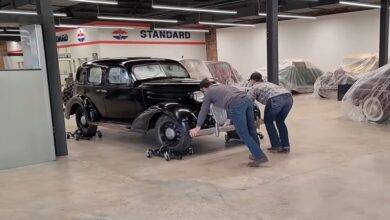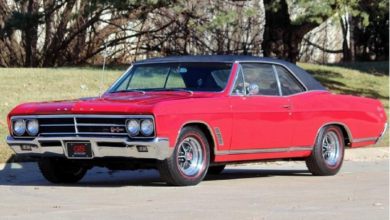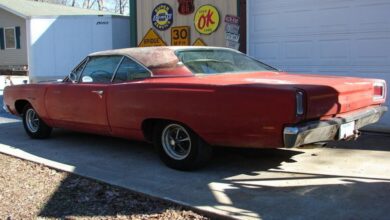Watch What It Takes To Resurrect This Classic 1970 Dodge Charger.
Entailing a father and son, restored a 1970 Dodge Charger into its full glory, with a new interior, stronger 440 big block, and a four-speed. This classic charger, which they nicknamed “Jezebel”, is a project that took more than 2 years to restore. The project was all done by a father and son, a duo that’s well known for their amazing muscle car restoration works.
The exterior still looks bold and muscular, with the “Jezebel” lettering on the rear side panel. A new dashboard, along with equipment, and an upgraded color theme has been provided for the interior. This Charger also has a new rear end and sporty tires. The duo also upped the charger’s standard 440 engine, which now makes 600+ horsepower and high peak torque.
After years of work, the father and son’s classic charger restoration is dragstrip-ready. We’ll discuss the restoration, with an eye on the key modifications and components that brought the Jezebel back to life.
The Dodge Charger Gets Stitched Together
Dodge Chargers charm people with their high-powered status and dominant shape, and this unit is no different. It preserves its classic silhouette with the distinct grille design and coupe-style rear end. However, at the time of this article is published, the Dodge Charger remains unpainted. There was clearly a lot more work going on to get the Charger operational before choosing shades for the exterior. But everything on the exterior looks intact, including the hardtop, the hood, and the doors. It also features the original windshield, which is priceless. The grille consists of expanded mesh. It conceals the entire front area, including the headlights. The classic charger also has the outstanding “Jezebel” lettering on the rear quarter panel, which the duo added in to give the restoration an identity.
According to the Jeff and the Scotts YouTube page, the story of the Jezebel dates back a half-decade ago. They reflected on the Jezebel’s rescue and how much time they invested in such a huge project. When they rescued the charger, its dashboard was completely damaged, along with its floor mats, seats, and center console. Some cockpit equipment was also absent. On the outside, the rear end was completely bashed in. The interior received its makeover, which came in form of blue color and fine stitching. Its interior also welcomed striking floor mats, to elevate the style. The duo added in a dashboard from another old Dodge Charger and made a few alterations to the inside. The classic Charger rides on 15 by 11 real vintage keystone rear tires and 15 by 6 front tires, giving it a staggered appearance. The tires came from a different racecar, just like the entire rear end, which they got from a ‘60s charger.
Engine Assembly And First Tests
For the final assembly, it was time for the Jezebel to receive a motor. At Scotts Speed shop, it seemed that they had already figured out what upgrades they wanted on the engine. Taking you back a bit; the Dodge Charger R/T was among the most recognizable muscle cars during the ‘70s. Like the classic Chevy Camaro, the Dodge Charger came with multiple engine offerings. For the ‘70s charger, the highest output of 305 hp came from a 7.2-liter V8 engine.
Under the steel hood, the Jezebel received a 440 big block engine, which, according to Jeff, makes 634 horsepower and 650 lb-ft of torque. It features two large demon carburetors, which work to supply air and fuel to the engines. At first glance, the engine looks gorgeous, yet very intimidating too. The motor comes attached to a 4-speed Chrysler transmission and 18-spline drive shaft, which combine to transfer the power and torque to the rear wheels. For better control and drivability, the duo added in a shifter, which they purchased separately. They used a Heim joint system to attach the shifter to the drivetrain, bringing practical benefits while leaving some room for articulation and adjustments. They made the Heim joint from parts they found lying around in the garage.
The engine and powertrain components were so massive and heavy that they used a crane to lift the system from the garage to the car. They also had to lift the frontal part of the car for easy installation. Except, it wasn’t so easy. Besides dealing with oil leaks, they had to deal with the shifter not snapping into place – a process that needed disassembling of the shifter itself. Also, the ram intake stuck out of the hood. A hood scoop was necessary to cover and accommodate the protruding intakes. Its opening was also going to provide a non-restricted flow of ambient air to cool the powerful engine. Once the engine was in place, they fitted in the headers to route exhaust gases to the exhaust system. When Jeff, started the motor, the charger’s engine, proved its awakening with a mighty roar.





